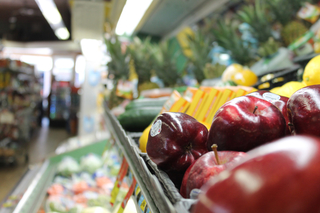Key findings
- The 11 participating stores' operators spent $2.3 million on cost of goods in 2017. Thirty percent was spent within the central Minnesota study area, with 232 farms accounts and 111 non-farm producers. (Eighteen stores in Central Minnesota fit the criteria, and so the study examined 61 percent of total stores available.)
- The 11 retailers generated an estimated $5.7 million of economic activity through the $3.5 million spent on operations in 2017. Of this, $1.4 million was labor income paid to area residents.
- A vast majority (86 percent) of consumer survey respondents ranked local foods as extremely, or very, important to their consumer choices. Moreover, the ranking of local foods as important was highly correlated with spending at the stores. The higher shoppers ranked local foods as important, the more they spent.
- Shoppers at the 11 stores were more motivated by health and community concerns than traditional retail management issues of pricing and variety. When asked which factors motivated them to shop at the stores, participants ranked “I want to support a locally-owned business” and “This store carries foods that are healthy” at the top of their list.
About this report
Examining small grocery operations
University of Minnesota Extension recently studied 11 of the 18 small grocery operations that fit the criteria of store size and product mix in Central Minnesota. These 11 stores focused on local, organic and natural foods. Results showed these businesses made an outsized contribution to their local economies, and their customers were motivated by health and community well-being.
For every dollar of sales at these stores, an additional 60 cents was generated in the region — three times the economic impact of typical food and beverage stores. The amount of goods that stores purchased from local producers explains this higher impact. Additionally, their focus on local foods both attracts shoppers and drives customers to spend more.
Reviewed in 2019


